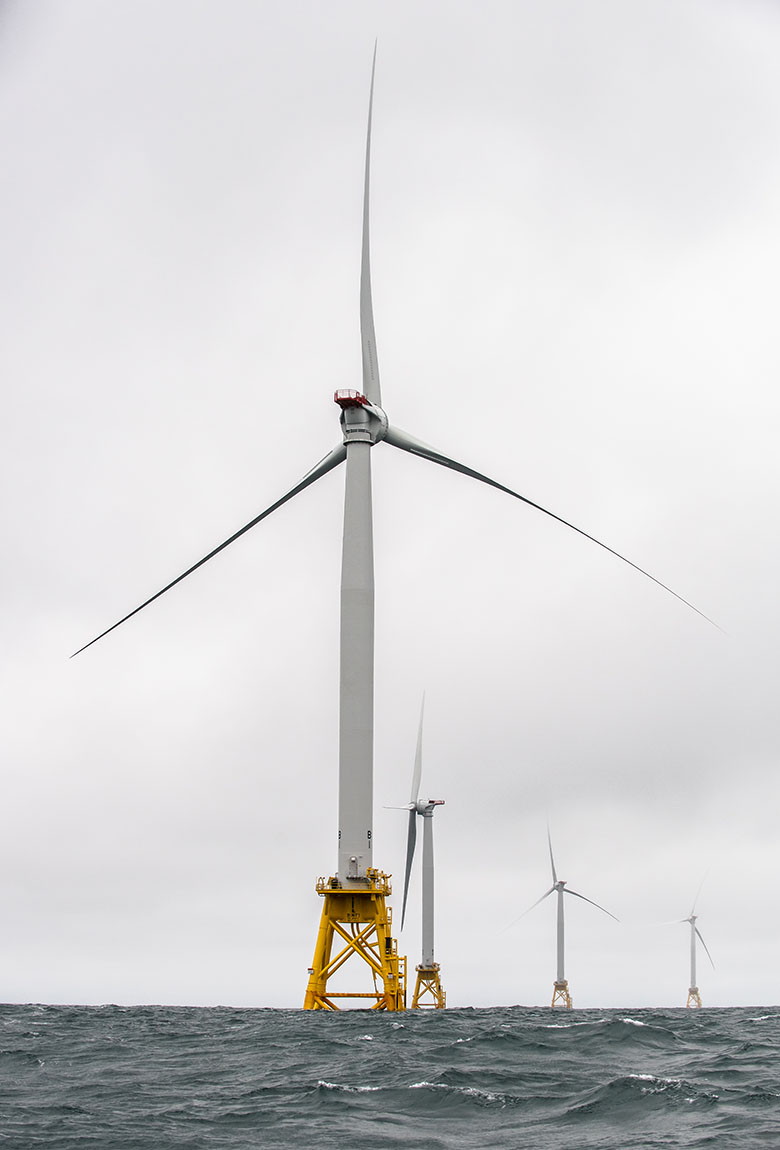A Sustainable Solution To Increase Clean Energy Deployment
Important Role of Contracts for Difference in Mitigating the Cost and Market Risks of Renewable Energy, Including Offshore Wind Energy
Global offshore wind energy capacity could reach nearly 400 gigawatts by 2032, six times more than today. As this sector grows, offshore wind energy projects—as well as other renewable energy projects—need strategies for securing funding to support their construction.

Contracts for difference (CfDs) offer one solution to renewable energy projects’ funding puzzle. In fact, governments around the world have used CfDs to procure 50% of installed global offshore wind energy capacity.
In a new Perspective article published in the journal Nature Energy, an international team of researchers led by the U.S. Department of Energy’s National Renewable Energy Laboratory (NREL) explains how CfDs can help manage risk and support increased clean energy deployment.
What Are Contracts for Difference?
CfDs are agreements between two parties—a wind energy project and a government, for example—that establish a fixed price per unit of electricity over a specific contract duration.
The wind energy project sells its output at the market price, which fluctuates over time. But under a CfD, if the market price for electricity is higher than the fixed price, the wind energy project pays the government extra money to make up the difference. Conversely, if the market price for electricity is lower than the fixed price, the government pays the wind energy project the difference, which helps the wind energy project recover its costs.
Through this risk-sharing arrangement, both parties in the contract—the wind energy project and government, in this example—can benefit from price certainty.
How Do These Contracts Support Renewable Energy Projects’ Upfront Costs?
Renewable energy projects—including wind farms—have relatively low operational costs and typically incur 60%–90% of their lifetime costs upfront. This means they require a lot of investment to get started.
To finance these upfront capital needs, renewable energy projects depend on stable, long-term electricity prices to repay their initial investments. However, electricity market prices tend to vary, which can create a barrier to funding for renewable energy projects. By establishing a fixed revenue stream for renewable energy projects, CfDs help create certainty that these projects will be able to pay back those initial investments.
As such, the authors argue, the primary role of CfDs is one of risk management.
“The payments awarded to renewable energy projects through CfDs are sometimes labeled subsidies,” said Philipp Beiter, an NREL wind energy researcher and the publication’s lead author who wrote the article in collaboration with researchers from the University of Sussex, Dartmouth College, the Technical University of Denmark, and an experienced energy finance professional. “However, that label could imply that CfDs always support projects that aren’t economically viable. We’re arguing that, rather than subsidizing renewable energy projects, CfDs’ primary role is one to mitigate the risk of fluctuating electricity prices. That can be a beneficial feature for investors, wind farm owners, governments, and consumers.”
In addition, that mitigated risk could have a domino effect on the cost of generating electricity and, ultimately, the growth of renewable energy.
“As more renewable energy projects use CfDs to finance their construction, the predictability CfDs offer has the potential to lower, on a large scale, the risk of investing in renewable energy,” Beiter explained. “That lowered risk may attract investors with lower return requirements. This, in turn, could reduce the cost of renewable-energy-generated electricity for consumers and lead to more rapid adoption of renewables.”
Could These Contracts Become Essential in Future Energy Markets?
Other rapidly growing technologies of our evolving power system, including batteries, electrolyzers, and the power transmission network, also come with high upfront costs. The growth of these technologies, along with more renewable energy, means that CfDs may become more common in the future.
As governments increasingly use CfDs to expand energy capacity, CfDs might become an essential part of future energy markets. This may come with challenges—such as preserving adequate incentives for new power plant construction—and might require careful market reform to adapt.
“With CfDs’ growing adoption in many markets around the globe, we recommend a greater research focus on understanding how different elements of CfD design interact with other features of the electricity market,” Beiter said. “We also suggest future research to investigate how key risks of power procurement are allocated among power plant owners, consumers, and taxpayers.”
Learn more about wind energy economic analysis at NREL, and subscribe to the laboratory’s wind energy newsletter.
Last Updated May 28, 2025
